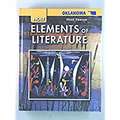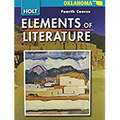- Table View
- List View
OHIO Western Studies, Grade 5
by Raymond C. Jones Irma M. Olmedo Kim PittsleyNIMAC-sourced textbook
The Ohlone Indians
by Catherine DiltsThe Ohlone story begins with the very first Americans. Have you ever wondered who they were and where they came from? In order to find out the origins of these people, we will review some geography to locate North America in relation to the rest of the world.
Okhaharana
by Mahakavi Premanandમહાકવિ પ્રેમાંનદ કૃત ઓખાહરણની શરૂઆત ગણેશ સ્તુતિથી થાય છે અને ત્યાર પછી કુલ ૯૩ કડવામાં કથા વહેંચાયેલી છે. બાણાસુરનો મદ ભાંગે છે, કૃષ્ણ શિવ વચ્ચે સૂલેહ થાય છે અને ઓખા-અનિરુદ્ધ ગૃહસંસાર માંડે છે. આ બધું કવિ પ્રેમાનંદની કાવ્યાત્મક આખ્યાન શૈલીમાં અહીં વાંચવા મળશે. અને અંતે, હરણ (અપહરણ) તો અનિરુદ્ધનું થયું છતાં કહેવાયું ઓખાહરણ !
Oklahoma: The History of an American State
by Ellen Sue Blakey Rita GeigerHow can a state that is so young have such a strong sense of history? After all, Oklahoma only became a state at the beginning of the twentieth century. There are still people alive who remember those events, and the stories are still fresh in the memories of families. At the same time, the geographical area that includes Oklahoma is one of the oldest places on the continent. Compared to our ancient mountains--worn away with age and time--the Rocky Mountains are still young.
The Oklahoma Adventure
by Sharon Cooper Calhoun Billie Joan EnglishThis is a textbook on the history of Oklahoma.
Oklahoma Common Core Coach Assessments, English Language Arts, Grade 8
by Triumph LearningNIMAC-sourced textbook
Oklahoma Common Core Coach, English Language Arts, Grade 4
by Triumph LearningNIMAC-sourced textbook
Oklahoma Common Core Coach, English Language Arts, Grade 5
by Triumph LearningNIMAC-sourced textbook
Oklahoma Common Core Coach, English Language Arts, Grade 8
by Triumph LearningNIMAC-sourced textbook
Oklahoma Holt Elements of Literature: Introductory Course
by Kylene Beers Lee OdellNIMAC-sourced textbook
Oklahoma Holt Elements of Literature: Fourth Course, Essentials of American Literature
by Kylene Beers Lee OdellNIMAC-sourced textbook
Oklahoma Holt Elements of Literature: Sixth Course, Essentials of British and World Literature
by Kylene Beers Lee OdellTextbook.
Oklahoma Holt Elements of Literature: Second Course
by Kylene Beers Lee OdellNIMAC-sourced textbook
Oklahoma Holt Elements of Literature: Fifth Course, Essentials of American Literature
by Lee Odell Kylene BeersHigh school literature textbook.
Oklahoma Integrated Science (Grade #7)
by Mcdougal LittellMcDougal Littell Science pulls together units from the different categories of science to give you a broad picture of how scientists study nature.



